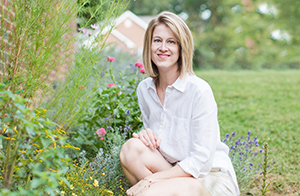If you have many different types of plants that you are growing, it can get confusing. I will show you how to organize your seed packets and all of your plant details, while making the information easily accessible from anywhere. I will also give you my template to use.
Physical Seed Organization and Storage
This was the easy part. I bought a plastic organizer for seed storage and it’s perfect. You can group seeds into categories like Greens, Tomatoes, Flowers, etc. and then store them all together. I store mine in my garage where it stays cool.

Seed Organization (Plant Database)
To keep track of which seeds I have and all of the many details about the plants, I set up a seeds Airtable database. That might sound scary to some of you, but I promise it’s just a fancy spreadsheet. You can sign up for a free account here. The cool thing about Airtable is that while it’s web accessible, they also have an app, which is so nice to have on your phone. And, it’s more user friendly than accessing a Google sheet.

If you are setting it up for the first time, it can take some time to get everything entered, but moving forward it’s pretty easy. Every time I buy seeds, I enter the information immediately and then it’s just a little bit of information to add here and there.
Sample of my Seeds Database
Here is an embedded sample version of what I have. You can click on each item to see all of the information.
Why would you want to have a seed or plant database?
For some people, they have the seeds packs and they go from that and that’s it. I like to have more information and be more organized. Here are a few reasons
- Some seed packs don’t have much information at all and some have incomplete information! This is so annoying when you are out in the garden trying to plant and have to google what to do.
- When ordering seeds, I don’t have to go to my garage and rummage through my seed packs to remember if I already have Danvers Carrots. When I’m at a store, same thing — if I can’t remember, I just open the app on my phone and check.
- It’s great for planting time. When I am starting seeds or direct sowing, I can open my app, search the plant and know that I should plant it 1/4″ deep. Some seed packs will tell you that and some won’t.
- It makes searching so easy! Because I have entered all of the data, I can search various things. For example, I might ask it to show me only plants that are frost hardy.
- My database has super powers. I programmed it to tell me when to start my seeds indoors based on the weeks prior info + my frost date. I LOVE THIS FEATURE! So many people stress over this and have no idea. If the seed package says to start something indoors 6 weeks prior to your last frost date, you enter 6 in the Indoor Start column and then it will tell you exactly when do plant your seeds indoors.

Watch a quick Instagram video to see how it all works

Get my template
I am happy to share my template with you. I love to see others succeed in the garden.
Instructions for using my Airtable plant template
- Create your free account.
- Create a new workspace. Call it Garden or whatever you want.
- After you get the link to the template, you will click COPY BASE at the top right.
- When it asks, “Which base…”, you will choose “Garden” — the workspace you just created. Click ADD BASE.

- Now it’s yours. You can open it up and edit it. You can delete the rows of veggies that I have or keep them and edit them.
- I recommend doing a basic Airtable tutorial.
- TO UPDATE THE FROST DATE TO BE APPLICABLE TO YOUR ZONE — Click the down arrow beside INDOORS START DATE column. Then, click CUSTOMIZE FIELD TYPE. Finally, in the formula section, where the date appears (2021-04-25), change the month and day to your frost date. YYYY-MM-DD. Then, click save. If you are in Zone 7A, you are in luck, you don’t need to change it. (If you don’t know your frost date, find it here.)


Then, do the same thing for the DIRECT SOW PLANT DATE column and the TRANSPLANT PLANT DATE column.
What else I use Airtable for
I have several tables in my Garden workspace on Airtable.
- Perennials – I have a list of all of my perennials and the plant information, when I planted, etc.
- Companion Planting – I have a list of all of the vegetables/fruits that I grow that lists their ideal companions and plants they dislike.
- Pests – I have a photo list of garden pests. Whenever you see an insect in the garden, you need to know if it’s a friend or foe. I started photographing and learning about my garden visitors and what to do about them.
- Beneficial Insects – I have a separate list of my garden friends.
- Controls – I have a list of my favorite organic garden helpers, along with helpful information like what it can help with, how to mix it, etc. Things like insecticidal soap, Neem and BT.

Grow with me!
See my other garden posts.
Get new posts in your inbox by subscribing.
Follow along on Instagram






1 Comment
[…] For more information about how I organize my seeds, see this post. […]